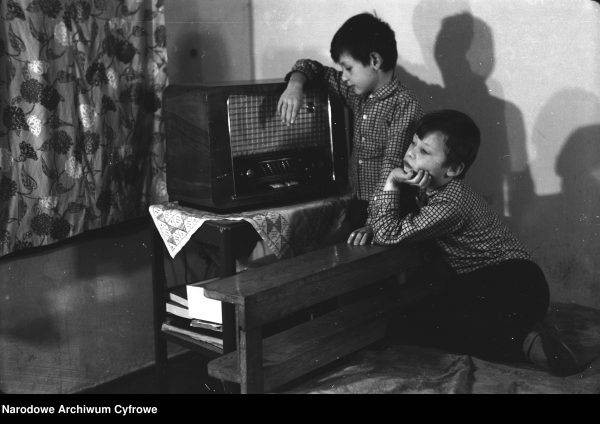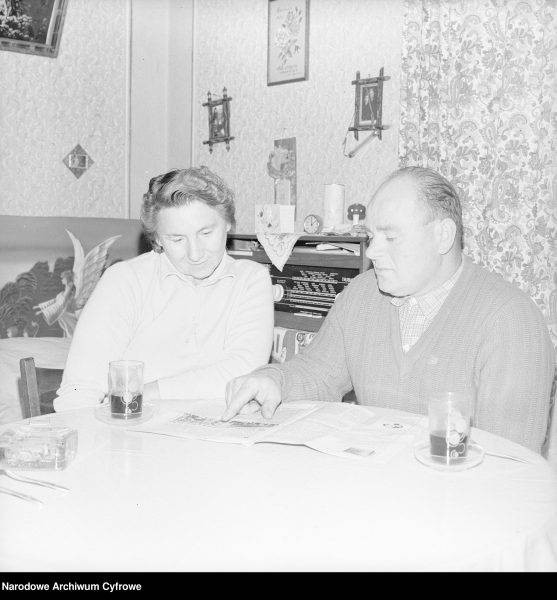Childless couples, unmarried and bachelors in the People's Republic of Poland did not have it easy. The authorities, in order to increase the birth rate, introduced "bulls" - increased income tax.
The "bull" itself is absolutely not a figment of the rulers of People's Poland. The term is much, much older. In the 16th century, this was the name of the fee that the owner of a cow paid to the owner of a bull in exchange for covering his animal. At the same time, the man who fathered the illegitimate child must have remembered the "bull" (as a punishment). In the early twentieth century, this was the name given to the tribute a shepherd received for raising a cow or the fee that a wedding guest had to pay to the orchestra if he wanted to dance with the bride . But nowadays, "bulls" are most strongly associated with the fate of maidens, bachelors and childless marriages that happened to live in the first three decades of the Polish People's Republic. It is also worth mentioning that the name may come from the phrase "old bull", which is used to describe an adult male.
You don't have children? You pay!
From January 1, 1946 to November 29, 1956, Polish citizens over the age of 21 - unmarried and unmarried, without children, whose total tax with increases did not exceed 65% of the tax base - they were forced to pay a tax 20% higher than their compatriots who are married and have offspring. Of course, in a country with a population of millions, there were, for example, single-parents. a certain exception to the rule was created for them - if they supported a son or daughter for at least 10 years, they did not have to pay a "bull".

The authorities did not investigate the causes of childlessness in marriages, but ordered to pay
An additional 10% of the tax was also paid by married couples who did not have dependent children. After 1956, the age limit for singles was raised to 25. The recipe survived in this form until 1973.
"Taurus" - what for?
It is worth considering why the authorities introduced such, at least unpopular, solution. First, after the end of World War II, the rulers wanted to increase the number of people living in Poland . The warfare took the lives of millions of Polish women and Poles, and the rebuilding state needed hands to work. Hence the tax aid in creating a baby boom. At least in mind.
"Bull" was also a form of punishment for childless people who broke out of the general vision of the state's social policy. The authorities did not delve into the causes of childlessness in marriages, but ordered to pay . The additional fee was also supposed to encourage marriage and family formation.
Did the bulls help?
The population of Poland just before the outbreak of World War II reached almost 35 million. After 1945, the territory of our country was inhabited by only 24 million people. Let us remind you that the "bull" came into force in January 1946. The highest jump in population growth in the country occurred in 195021958 and amounted to almost 20% . In 1960, the population of Poland reached almost 30 million, which means that in 15 years it increased by about 6 million. So the additional fee did its job? Not completely. "Taurus" was certainly not the main reason for the increase in the number of marriages and births. In fact, it is difficult to say what its real impact on the fertility rate of Polish women and Poles was.

Bykowe ”was certainly not the main reason for the increase in the number of marriages and births
In the 1950s, the phenomenon of the so-called "Consumption growth". Society sought to compensate for the losses caused by the war. The following were also important:high fertility of women, taken from the interwar period and a popular family model with many children, and low knowledge of family planning .
The 1960s was the decade in which the highs slowed down significantly. The reason for this was the fact that people born during the war entered reproductive age, and there were relatively few of them. The 1970s, i.e. the last ones, which were "caught" by the increased tax, were a period of another increase. And again - according to the principle "higher breeds higher" at that time people born in the 1950s entered adulthood and had their own children. There has been a situation in which "bull" donation was abandoned, because the number of babies born was very large.
Not only in PRL
Whatever you write, the "bull" tax was and is an element of pro-family policy. Controversial and unpopular, but used - though not always in the same form as in the People's Republic of Poland. Today, perhaps the most famous country where a citizen has to pay it is Germany.

An additional 10% of the tax was also paid by married couples who did not have dependent children
"Germany dominates the world in terms of the number of duties and taxes paid by childless singles, according to a study by the Organization for Economic Co-operation and Development (OECD), which of the year analyzes the burden of income from work through taxes and social security contributions in 37 OECD member countries ” - we read on the MyPolacy.de portal.
But also in Poland, from time to time, information appears that the government is supposed to refresh the idea of a tax for childless people.
Bibliography:
- Announcement of the Minister of Finance of January 21, 1957 on the publication of the consolidated text of the Decree of October 26, 1950 on income tax .
- https://historia.org.pl/2019/07/16/skad-sie-wzielo-bykowe-czyli-prl-owski-podatek-dla-bezdzietnych-niezonatych-i-niezameznych/ [access:25.05. 2022]
- https://kronikidziejow.pl/porady/podatek-bykowy-w-prl-za-brak-dzieci-placiles-wyzszy-podatek/ [access:25/05/2022]
- https://stat.gov.pl/files/gfx/portalinformacyjny/pl/defaultaktualnosci/5468/12/5/1/podstawowe_informacje_o_rozkieta_demograficzny_polski_do_2014.pdf [access:May 25, 2022]
- https://www.mypolacy.de/wiadomosci/bykowe-w-niemięć-to-kura-znoszaca-zlote-jajka-pytanie-czemu-tak-jest/ [accessed:May 25, 2022]
